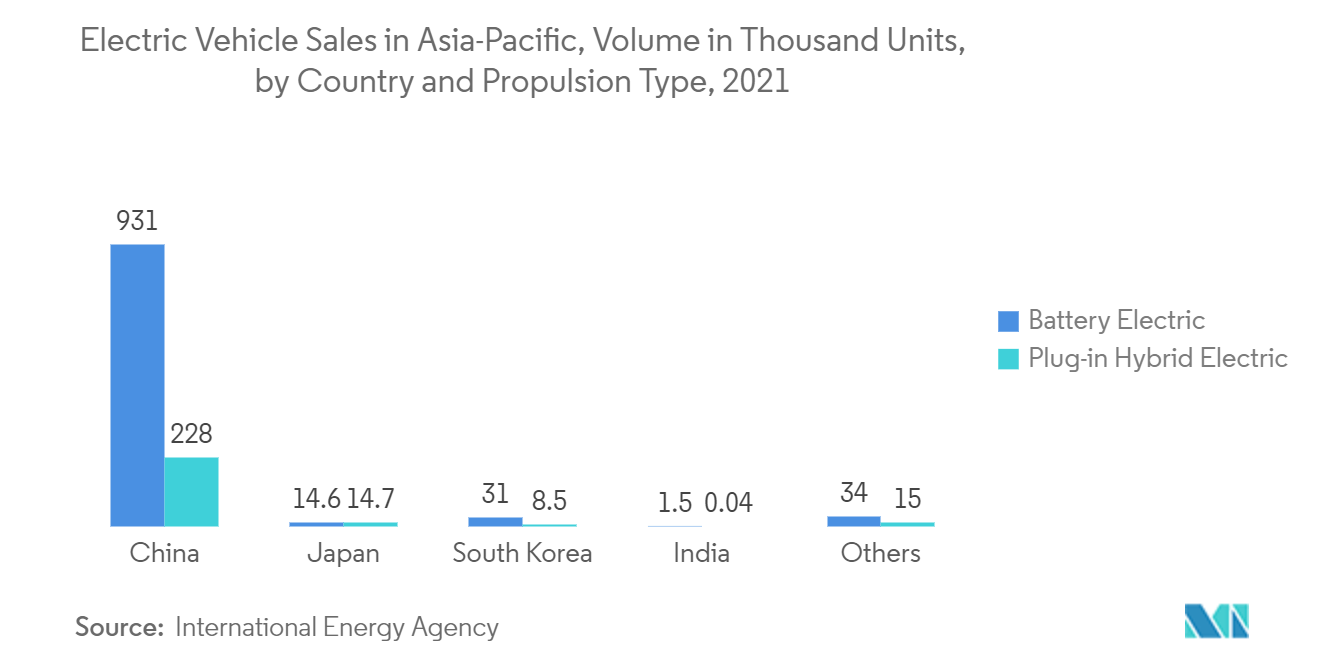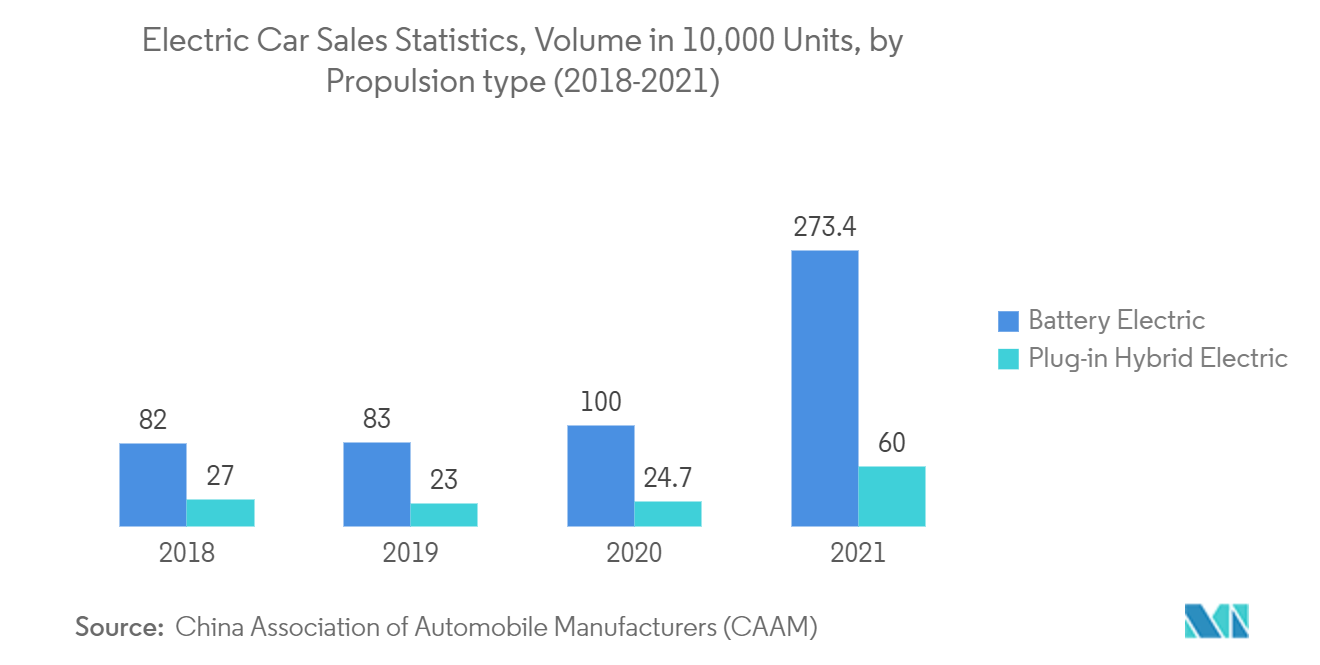Market Trends of Asia Pacific Automotive High Performance Electric Vehicles Industry
This section covers the major market trends shaping the APAC Automotive High Performance Electric Vehicles Market according to our research experts:
Increasing Demand for Plug-in Hybrid Electric Vehicles
China, the region's largest automobile market, is also the region's largest market for high-performance electric vehicles, followed by Japan. The Asia-Pacific region's emission regulations and subsidies for hybrid and electric vehicles aided it in capturing a sizable share of the overall electric and hybrid vehicle market. Although grants and emission standards have helped increase green vehicle sales, the global share of plug-in electric vehicles is less than 1%.
Fuel price fluctuations and reduced subsidies offered on plug-in hybrid vehicles in major markets such as China affect vehicle sales. In contrast, many automakers are introducing plug-in hybrid versions of existing vehicles, indicating that the market trend is shifting toward environmentally friendly plug-in hybrid vehicles.
Manufacturers such as Mercedes-Benz, Volvo, BMW, Volkswagen, Ford, Mitsubishi, and others have already launched plug-in-hybrid versions of existing IC engine vehicle models, accounting for a significant portion of global plug-in vehicle sales. China is the region's largest manufacturer of plug-in hybrid vehicles. The country is also the largest market for these vehicles, with leading manufacturers including BYD, SAIC, and BAIC.

China is The Largest Market
With growing concerns about environmental pollution, the government has pushed back the implementation of the next stage of emission standards, Bharat Stage 6, from 2024 to April 1, 2020. The government is implementing a number of policies to reduce pollution in the country.
FAME, which stands for Faster Adoption and Manufacturing of Hybrid and Electric Vehicles, is one such strategy. The government has decided to play a critical role in fostering demand for and acceptance of PHEVs and EVs, spurring collaborative R&D efforts, and allowing the necessary infrastructure to take shape. The government has also decided to implement a robust PHEV and EV demand-generation scheme in terms of size and duration to meet the goals of closing the PHEV and EV acquisition price gap when compared to a standard ICE vehicle. Furthermore, the aforementioned scheme is being implemented in order to create a manufacturing ecosystem that will allow these technologies to become viable. Government funding for R&D and electric vehicle infrastructure is thought to make it easier to develop affordable PHEV and EV solutions that meet consumer expectations.
The Indian government has developed a potential roadmap for transportation hybridization/electrification. This road map entails increasing consumer acceptability through incentives and subsidies. Furthermore, the government is likely to participate in the technology's application and development. Furthermore, the government may support automakers' local manufacturing capabilities. The Government of India intends to use this roadmap to make the electric vehicle and plug-in hybrid vehicle markets economically viable and self-sustaining.

